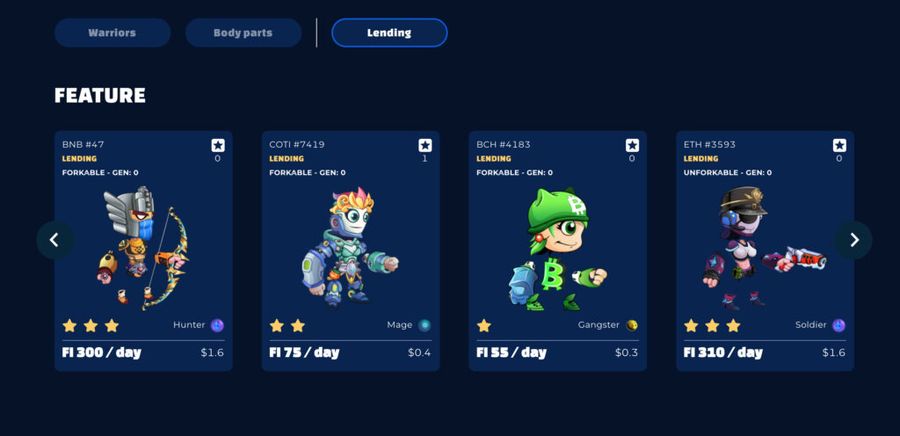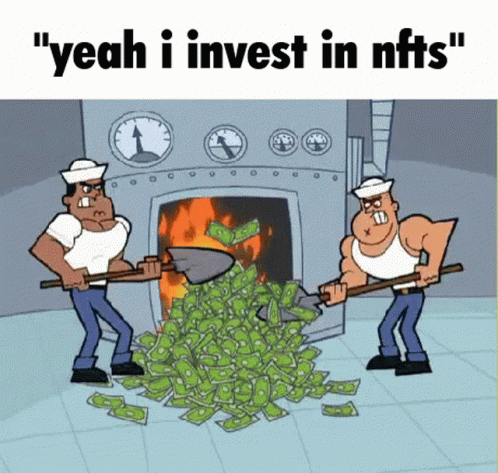Blinded by banks, the old-fashioned money lender that encourages people to borrow, get into debt, and when you’re unable to repay, they take your home, 99% of the world’s inhabitants are unaware of NFT lending, the same way they knew nothing about online shopping in 1995. This article dissects the billion-dollar once-in-a-century crypto lending opportunity since money, just like manure, smells if you don’t spread it around.
Recent research: The SEC vs. NFTs: What You Need to Know
Introduction
Non-fungible tokens (NFTs) have become popular within the crypto sphere, where billions of dollars exchange hands monthly. However, there’s now more than just buying and selling NFTs and holding them or setting them as profile pictures. NFT lending platforms have emerged by integrating NFTs and decentralized finance (DeFi) protocols. Learning about the business of NFT lending protocols is the surefire way of ensuring you’re not left behind.
Related news: The Ultimate 2024 Guide to NFT for Dummies
What is NFT Lending?
NFT lending refers to a loan facility where borrowers use NFTs as collateral, and NFT lending smart contracts take the place of third parties. The concept involves placing NFT as collateral and then locking them to receive fiat money or crypto coin loans from money lenders who hope to gain returns from their money. When the loan term expires, the borrower pays back the capital plus interest and gets back their locked NFT, or the NFT becomes the lender’s asset in case of default.

How NFT Lending Works
A borrower can expect to receive loans of up to 50% of the declared value of their NFTs at an interest rate of between 20% and 80% based on the NFT’s popularity. The beauty of this service is how simple, fast, and transparent they are when you compare NFT lending vs. traditional lending. The steps followed in the general NFT lending market are as follows:
Step 1: Request for a Loan: The NFT owner places their NFT as collateral and requests a loan.
Step 2: NFT Evaluation: The platform evaluates the asset’s value based on its uniqueness, market price history, etc.
Step 3: Loan Issued: The lender provides the loan and locks the digital asset in a smart contract.
Step 4: Loan Repayment: The borrower repays the loan, and the smart contract unlocks and returns the NFT to the owner.

Benefits of NFT Lending
Below are among the tangible benefits of NFT lending:
Unlocking Liquidity: The NFT lending ecosystem enables NFT owners who need funds to access liquidity without selling their NFTs, thereby unlocking their value without giving up their NFTs.
Capitalize Digital Assets: Borrowers can capitalize on the value of their NFTs and access funds that may not otherwise be available using traditional lending settings.
Affordable Interest Rates: NFT lending markets offer interest rates that are relatively lower than the regular financial institutions as there’s reduced risk to the borrower seeing that the loan is secured via collateral. There are fewer overheads and administrative costs.
Decentralized and Trustless: Other NFT lending rewards include decentralization – they operate on a peer-to-peer basis minus third parties like banks, thereby creating a direct trustless environment. Furthermore, using NFT lending smart contracts introduces automation, transparency, and reduced risk of fraud.

Risks and Challenges
Similar to all other financial products, there are several attendant risks in NFT lending that every user needs to be aware of, including the following:
Market Volatility and Risk: NFTs are similar to cryptocurrencies in terms of market volatility and risk, meaning their value can fluctuate rapidly and leave borrowers at risk of default when their collateral’s value falls below the loan amount. Moreover, a Bear Run could render NFT lending trends less liquid and make selling or borrowing against them difficult.
Smart Contract Risks: NFT lending platforms use smart contracts which are not 100% infallible. Execution errors or bad actors exploiting bugs and code vulnerabilities could lead to loss of funds or other unintended consequences.
Counterparty Risk: The NFT lending ecosystem operates a decentralized peer-to-peer system without the mediation of conventional banking institutions. It creates a counterparty risk involving users who don’t know each other with a chance of failing to meet their obligations.

Regulatory Risk: Regulatory considerations for NFT lending are a hot subject in most jurisdictions, creating an environment of great uncertainty. The absence of NFT lending risk mitigation at the moment means any regulatory changes or actions happening could impact the market one way or the other and disrupt the crypto lending market.
Read also: Embracing the NFTs: A Journey into Digital Ownership
Notable NFT Lending Platforms
There are thousands of NFT lending platforms, but according to several NFT lending user reviews, the leading platforms include the following:
Aavegotchi: Aavegotchi is a leading DeFi platform associated with the Aave protocol that supports many crypto assets and tokens. The platform features the unique Gotchi Collateral system, where users can mint their NFTs and use them as collateral for loans.
NFTfi: NFTfi supports numerous NFTs, including Axies, Bored Apes, and CryptoPunks, where users can create custom loan terms involving repayment periods, interest rates, and collateral requirements. Moreover, users can fractionalize their NFTs to borrow smaller amounts of money.
Rarible Loans: At Rarible Loans, the range of acceptable NFTs includes the platform’s range of NFTs, Art Blocks, and Bored Ape Yacht Club, and users can create their custom loans.
Case Studies
NFTfi, Paraspace, and BendDAO are among the pioneer and most popular NFT lending platforms offering peer-to-peer lending and borrowing by directly connecting the parties.
The platform lenders can choose to earn interest by providing crypto loans, and borrowers can access liquidity by collateralizing their listed NFTs. Per data from Dune, as of April 2023, NFTfi had facilitated over $390 million, BendDAO over $298 million, and Paraspace boasted over $236 million in user loans.

Regulatory Considerations
Among the regulatory considerations for NFT lending that players should be careful about include intellectual property rights related to NFTs.
Users must ensure they read the fine print as far as NFT lending smart contracts are concerned, and like with traditional loans, the lender should determine the value of collateral NFT.
In unsettled legal or financial situations, parties are best advised to consider legal guidance.
Tips for NFT Lenders and Borrowers
There’s no doubt that education plays a role in the success or otherwise of investors, and NFT lending isn’t an exception. The future of NFT lending is, among other things, a robust market, and potential lenders and borrowers must learn the best NFT lending strategies to ensure optimal success.
To reduce their risk, NFT lenders should diligently assess the value of any NFT collateral in terms of demand, rarity, and NFT lending trends. Moreover, it’s necessary to evaluate every borrower’s creditworthiness besides managing risks by diversifying their loan portfolio and carefully monitoring market behavior.
Borrowers, on the other hand, should carefully consider market trends, data on past sales, and future potential demand for NFTs so lenders can be assured of the value and stability of their assets. Furthermore, they may want to diversify their collateral mix to provide a buffer in case there’s market volatility. The most important is to maintain a robust debt-to-income ratio.
Future Trends and Outlook
Research by NFTgators.com indicates that the NFT lending ecosystem is growing in leaps and bounds as the weekly loan volume rose from $5.2 million to $23.4 million since October 2022.
The positive trend results from the increase in the number of NFT lending protocols extending lending services, with the new market leaders being Arcade, BendDAO, X2Y2, and NFTfi, among others.
Conclusion
As NFTs continue to gain popularity by tokenizing many assets, from digital art to real estate, NFT lending has become an exciting advancement in DeFi by opening an extra avenue of liquidity options for NFT holders.
While there remains some significant risk, NFT loans are a new way for users who understand the risks and NFT lending tax implications to unlock liquidity from their otherwise idle assets.



